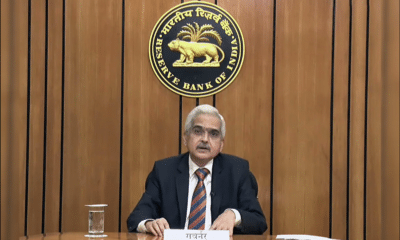Banking
RBI proposes 4-layered structure for regulation of NBFCs
The Reserve Bank of India (RBI) has proposed a four-layered structure for the regulation of non-banking financial companies (NBFCs). It has been envisaged as a pyramid-like structure, where regulated entities will be classified into each layer based on parameters like asset size, type of liabilities and their relative systematic importance.
In the discussion paper, the RBI explained that the bottom of the pyramid, or base layer, where least regulatory intervention is warranted, will consist of NBFCs currently classified as non-systemically important NBFCs (NBFC-ND), NBFC peer-to-peer (P2P) lending platforms, NBFC-account aggregator (AA), non-operative financial holding companies (NOFHCs) and type-1 NBFCs.
It said that as one moves up, the next layer can consist of NBFCs currently classified as systemically important NBFCs (NBFC-ND-SI), deposit taking NBFCs (NBFC-D), housing finance companies (HFCs), infrastructure finance companies (IFCs), infrastructure development funds (IDFs), standalone primary dealers (SPDs) and core investment companies (CICs). The central bank said the regulatory regime for this layer shall be stricter compared to the base layer. The paper highlighted that adverse regulatory arbitrage vis-a-vis banks can be addressed for NBFCs falling in this layer to reduce systemic risk spill-overs, where required.
Also Read: American Pistachio Growers announces Luke Coutinho as Lifestyle Ambassador in India
The upper layer will be subject to enhanced regulatory requirement at least for four years from its last appearance in the category, even where it does not meet the parametric criteria in the subsequent year. If an identified NBFC-UL does not meet the criteria for classification for four consecutive years, it will move out of the enhanced regulatory framework. The NBFC sector has seen tremendous growth in recent years. And in the last five years alone, size of balance sheet of NBFCs has more than doubled from Rs 20.72 lakh crore (2015) to Rs 49.22 lakh crore (2020).
The paper said that NBFCs will occupy the top of the upper layer as a distinct set. This top layer of pyramid will remain empty unless supervisors take a view on specific NBFCs. If certain NBFCs lying in the upper layer are seen to pose extreme risks as per supervisory judgement, they can be put to significantly higher and bespoke regulatory and supervisory requirements.










































